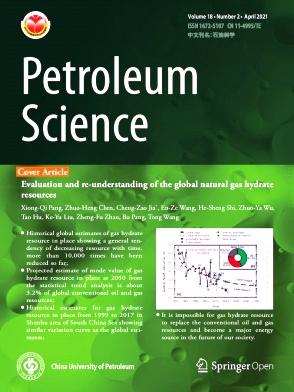Evaluation of cement density utilizing through-casing X-Ray logging method
IF 6
1区 工程技术
Q2 ENERGY & FUELS
引用次数: 0
Abstract
In the evaluation of cementing quality, quantitatively assessing cement density is crucial along with identifying the cementation degree at the interface using acoustic logging. While the 137Cs-based formation density logging method is well-suited for density calculation, its reliance on open-hole environmental measurements poses challenges when inspecting cement density. This work focuses on the quantitative calculation of cement density while considering the radioactive hazards to the environment caused by 137Cs source. The proposed approach utilizes a measurement system consisting of an X-Ray source and four gamma detectors. The gamma spectrum characteristics of each detector are analyzed, and the energy spectrum recorded by each detector is distinguished by different energy windows. A forward model is established to relate the gamma counts of each energy window to the formation and cement parameters. By employing a regularized Newton's method based on optimization technique, cement density can be calculated with a controllable error margin of within 0.015 g/cm3. Furthermore, even though X-Ray detection has lower sensitivity to formation parameters compared to 137Cs, this method is capable of estimating formation density. Overall, the proposed approach enables the quantitative calculation of cement density and semi-quantitative calculation of formation density, therefore is of significance to the comprehensive evaluation of cementing quality.
求助全文
约1分钟内获得全文
求助全文
来源期刊

Petroleum Science
地学-地球化学与地球物理
CiteScore
7.70
自引率
16.10%
发文量
311
审稿时长
63 days
期刊介绍:
Petroleum Science is the only English journal in China on petroleum science and technology that is intended for professionals engaged in petroleum science research and technical applications all over the world, as well as the managerial personnel of oil companies. It covers petroleum geology, petroleum geophysics, petroleum engineering, petrochemistry & chemical engineering, petroleum mechanics, and economic management. It aims to introduce the latest results in oil industry research in China, promote cooperation in petroleum science research between China and the rest of the world, and build a bridge for scientific communication between China and the world.
 求助内容:
求助内容: 应助结果提醒方式:
应助结果提醒方式:


